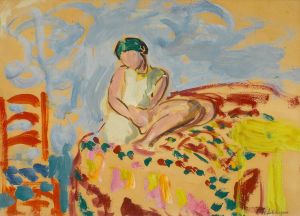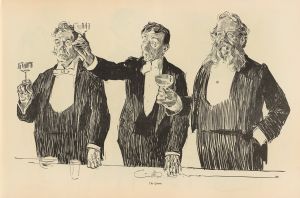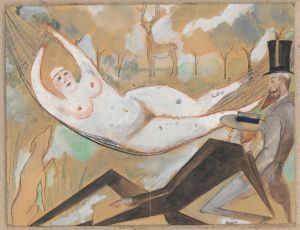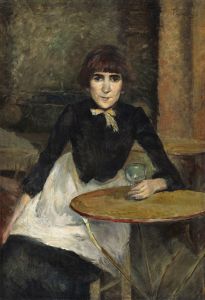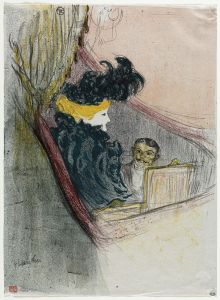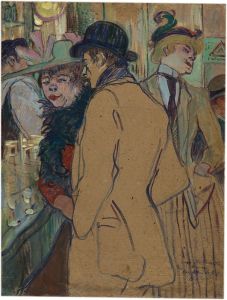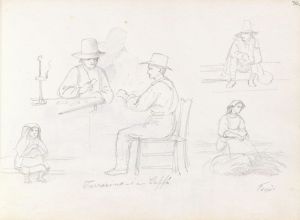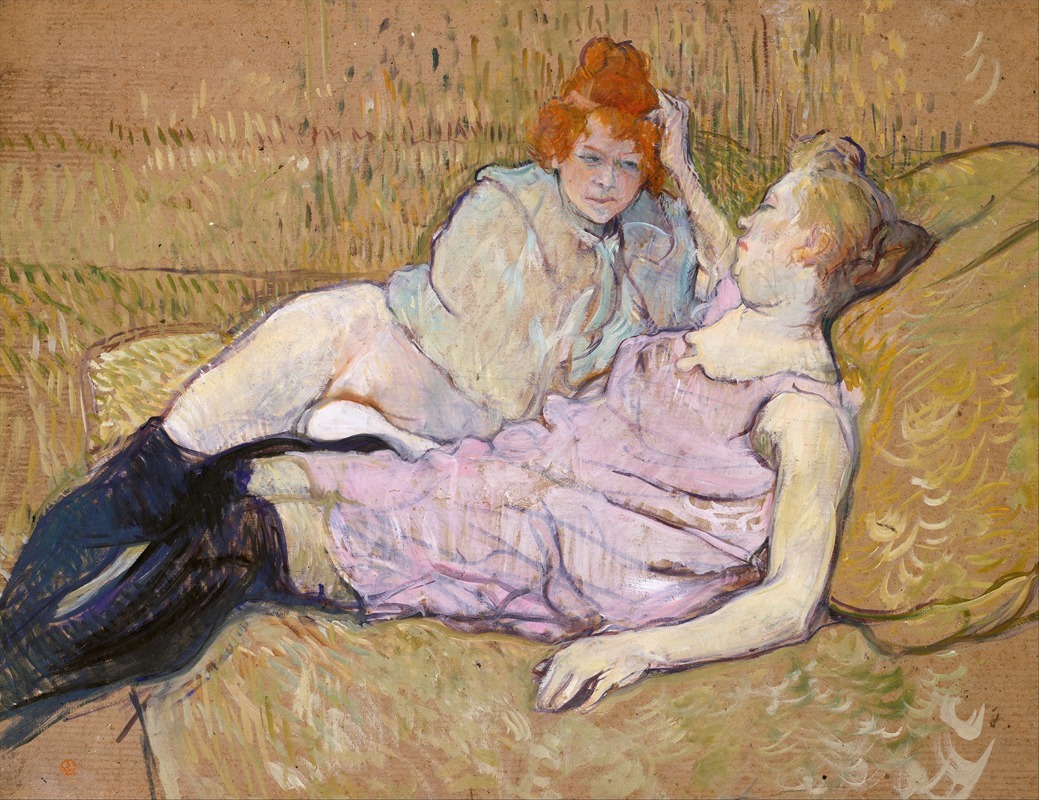
The Sofa
A hand-painted replica of Henri de Toulouse-Lautrec’s masterpiece The Sofa, meticulously crafted by professional artists to capture the true essence of the original. Each piece is created with museum-quality canvas and rare mineral pigments, carefully painted by experienced artists with delicate brushstrokes and rich, layered colors to perfectly recreate the texture of the original artwork. Unlike machine-printed reproductions, this hand-painted version brings the painting to life, infused with the artist’s emotions and skill in every stroke. Whether for personal collection or home decoration, it instantly elevates the artistic atmosphere of any space.
Henri de Toulouse-Lautrec, a prominent French painter, printmaker, and illustrator, created "The Sofa" in 1894. This painting is one of the many works that capture the vibrant and often provocative world of Parisian nightlife during the late 19th century. Toulouse-Lautrec is renowned for his depictions of the bohemian lifestyle in Montmartre, a district in Paris known for its cabarets, cafes, and dance halls. His works often feature the performers and patrons of these establishments, providing a vivid glimpse into the social dynamics of the time.
"The Sofa" exemplifies Toulouse-Lautrec's unique style, characterized by bold colors, expressive lines, and a keen eye for capturing human emotion and interaction. The painting portrays two women reclining on a sofa, a subject that reflects the intimate and sometimes candid moments of everyday life that Toulouse-Lautrec was known to depict. The composition is intimate, drawing the viewer into the private world of the subjects. The use of color and line in "The Sofa" highlights the relaxed yet complex relationship between the two figures, a common theme in Toulouse-Lautrec's exploration of human connections.
Toulouse-Lautrec's work was heavily influenced by the Impressionists, yet he developed a distinctive approach that set him apart. His focus on the nightlife and underbelly of Parisian society offered a contrast to the more traditional subjects of his contemporaries. "The Sofa" is a testament to his ability to capture the essence of a moment with both sensitivity and a touch of realism. The painting's composition and the positioning of the figures suggest a narrative, inviting viewers to ponder the story behind the scene.
The artist's technique in "The Sofa" reflects his mastery of both painting and drawing. Toulouse-Lautrec often used thinned oil paint to achieve a fluidity and transparency that allowed for the layering of colors and textures. This method is evident in "The Sofa," where the interplay of light and shadow adds depth to the scene. His use of line is both deliberate and spontaneous, capturing the immediacy of the moment while also conveying the subtleties of the subjects' expressions and postures.
Toulouse-Lautrec's personal life and experiences greatly influenced his work. Born into an aristocratic family, he suffered from health issues that stunted his growth and led to physical disabilities. These challenges, coupled with his immersion in the bohemian lifestyle of Montmartre, informed his empathetic portrayal of society's marginalized individuals. "The Sofa," like many of his works, reflects his fascination with the complexities of human relationships and the environments in which they unfold.
Today, "The Sofa" is appreciated not only for its artistic merit but also for its historical significance. It provides insight into the cultural and social milieu of fin-de-siècle Paris, a period marked by rapid change and artistic innovation. Toulouse-Lautrec's ability to capture the spirit of his time with both honesty and artistry ensures that works like "The Sofa" continue to resonate with audiences and art enthusiasts around the world. His legacy as a chronicler of Parisian life and a pioneer of modern art remains influential, and "The Sofa" stands as a notable example of his contribution to the art world.






